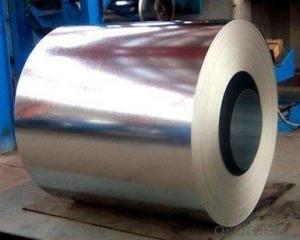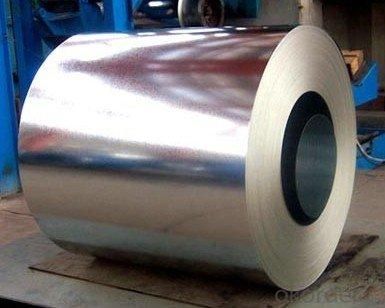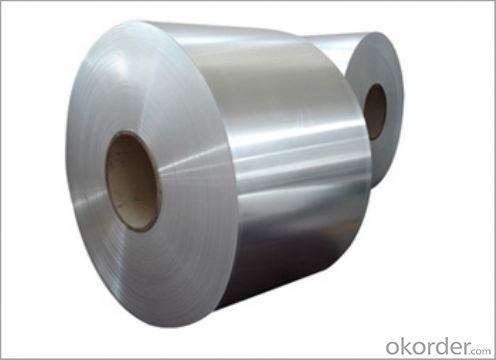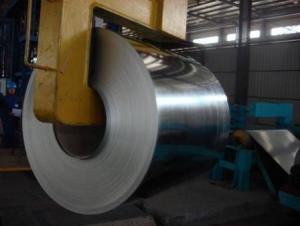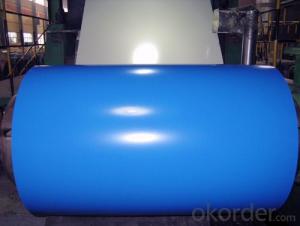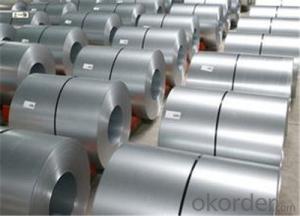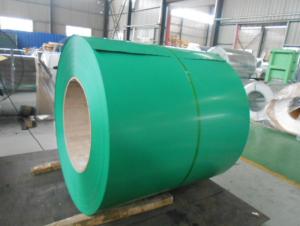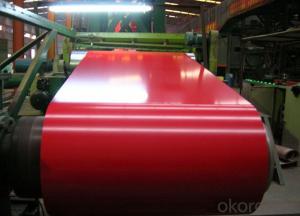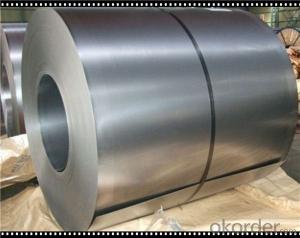GALVANISED STEEL COILS WITH ISO9001:2008
- Loading Port:
- Qingdao
- Payment Terms:
- TT OR LC
- Min Order Qty:
- 25 m.t.
- Supply Capability:
- 10000 m.t./month
OKorder Service Pledge
Quality Product, Order Online Tracking, Timely Delivery
OKorder Financial Service
Credit Rating, Credit Services, Credit Purchasing
You Might Also Like
GALVANISED STEEL COILS WITH ISO9001:2008
Specifications for Galvanized Steel Coils
| aterial | SGCC, DX51D+Z |
| Thickness | 0.13-0.8mm |
| Width | 750-1250mm |
| Zinc coated | 40-180g/m2 |
| Standard | ASTM,AISI,DIN,GB |
| Spangle | Zero Spangle, Regular Spangle, Small Spangle |
| Surface treatment | chromated and oiled, chromated and non-oiled |
| Technique | cold rolled galvanized |
| Grade | Prime |
| ID | 508mm or 610mm |
| Coild weight | 3-5MT/Coil or as your request |
| Quality | Softy , half hard and hard quality |
Detail Information for Trading
| Certificate | ISO9001, BV test |
| MOQ | 25MT |
| Supply Ability | 3500MT/month |
| OEM | Accept |
| Price Item | FOB, CFR, CIF |
| Payment terms | T/T, L/C at sight |
| Delivery time | 15-35days after confirm the order |
| Packaging | export standard |
Application for Galvanized Steel Coils
| onstruction | Outside | Workshop, agricultural warehouse, residential precast unit, corrugated roof, roller shutter door, rainwater drainage pipe, retailer booth |
| Inside | Door, doorcase, light steel roof structure, folding screen, elevator, stairway, vent gutter | |
| Electrical appliance | Refrigerator, washer, switch cabinet, instrument cabinet, air conditioning, micro-wave oven, bread maker | |
| Furniture | Central heating slice, lampshade, chifforobe, desk, bed, locker, bookshelf | |
| Carrying trade | Exterior decoration of auto and train, clapboard, container, isolation lairage, isolation board | |
| Others | Writing panel, garbage can, billboard, timekeeper, typewriter, instrument panel, weight sensor, photographic equipment | |
PICTURES :
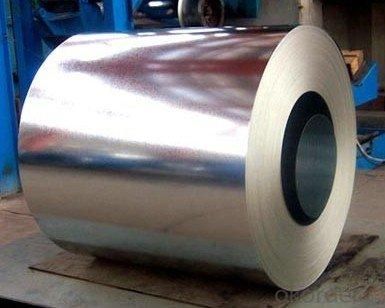
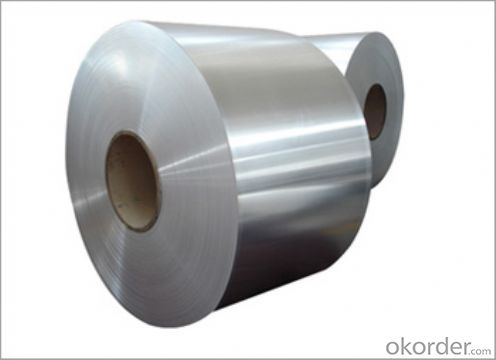
- Q: What are the different types of steel coil storage systems?
- There are several types of steel coil storage systems, including coil racks, coil cradles, coil saddles, and coil spools. Coil racks are vertical storage systems that allow coils to be stored upright. Coil cradles are horizontal storage systems that support the coil along its length. Coil saddles are similar to cradles but have additional supports to prevent the coil from rolling. Coil spools are specialized storage systems that allow for easy unwinding and rewinding of the coil.
- Q: How are steel coils used in the production of construction materials?
- Due to their strength, durability, and versatility, steel coils find widespread usage in the manufacturing of construction materials. Typically made from high-quality steel, these coils are shaped into continuous, cylindrical forms. In the realm of construction material production, steel coils serve different purposes. One primary application involves their use in the creation of steel beams, vital components in constructing buildings, bridges, and other structures. By processing and shaping the steel coils to the desired dimensions, they can easily be formed into beams capable of bearing heavy loads and providing structural support. Another significant utilization of steel coils in construction materials lies in the production of roofing materials. Transforming these coils into corrugated sheets, which are commonly employed as roofing panels, proves highly beneficial. Steel's durability and ability to withstand harsh weather conditions make it an ideal choice for safeguarding buildings against rain, snow, and strong winds. Moreover, these steel coils can be coated with protective layers to enhance their longevity and prevent corrosion. In addition, steel coils play a crucial role in fabricating construction materials such as pipes, tubes, and poles. By shaping the coils according to desired specifications, robust and reliable components for infrastructure projects can be created. Whether for underground pipelines, structural support systems, or utility poles, steel coils provide the necessary strength and durability required for these construction materials. Furthermore, steel coils assume a vital role in the production of construction materials employed in the fabrication of various fixtures and fittings. Through processing and shaping, steel coils can be transformed into door frames, window frames, reinforcement bars, and wire mesh, among other essential elements. This versatility allows for the creation of a wide range of construction materials indispensable for completing buildings and infrastructure projects. In conclusion, the utilization of steel coils in the production of construction materials is driven by their strength, durability, and versatility. Whether in the form of steel beams, roofing materials, pipes, or fixtures, these coils are molded into various shapes and sizes that cater to the specific requirements of construction projects. The incorporation of steel coils guarantees that construction materials possess strength, reliability, and the ability to withstand the demands of the built environment.
- Q: What are the common coil widths and thickness combinations available for steel coils?
- The common coil widths and thickness combinations available for steel coils vary depending on the specific requirements and industry standards. However, there are some standard sizes that are commonly available in the market. For coil widths, the most common standard sizes range from 600mm to 2000mm. These widths are widely used in various industries such as automotive, construction, and manufacturing. However, custom widths are also available to meet specific project needs. As for the thickness combinations, steel coils are typically available in a range of thicknesses. The most common thicknesses for steel coils are between 0.4mm and 3mm. However, thicker or thinner options are available depending on the specific application. It is important to note that these standard sizes and thickness combinations may vary based on the specific steel grade, manufacturing process, and the supplier's capabilities. It is always recommended to discuss the required specifications with the supplier or manufacturer to ensure the availability of the desired coil widths and thickness combinations.
- Q: Will a 1 inch thick A36 steel target withstand a 7.62x54r round?
- It sure will. It will also be a major pain in the back side to move it to where you can safely shoot at it.
- Q: What processes and materials are used in the production of chrome steel
- Go to the process section and find point 6 (explains when alloys are added). Chrome is added at this point, usually in the form of ferrochrome alloy (FeCr). Many kinds of chrome steel also contain nickel. The strengthening effect on steel by forming stable carbide grains at the grain boundaries and the strong increase in corrosion resistance made chromium an important alloying material for steel. The high speed tool steels contain between 3 and 5% chromium.
- Q: What is the process of galvanizing steel coils?
- The process of galvanizing steel coils involves immersing them in a bath of molten zinc to create a protective coating. The coils are first cleaned and then passed through a series of chemical baths to prepare the surface for galvanization. Afterward, they are dipped into the molten zinc, which bonds to the steel to form a corrosion-resistant layer. Once coated, the coils are cooled, inspected, and prepared for shipment or further processing.
- Q: How can I owe a Pre-engineered Steel Building?
- You just have to do small efforts for owing a steel building: Firstly you have to finalize a steel building company for construction work. After finalizing the steel building company, the next step is the paperwork - the agreements and contracts. Some steel building companies may also ask for a verbal approval for the factories to get the work started.
- Q: How are steel coils inspected for flatness using optical sensors?
- Steel coils are inspected for flatness using optical sensors by employing a system known as optical flatness measurement. This method involves the use of high-resolution cameras that capture images of the steel surface as it passes through the inspection line. Firstly, the steel coil is unwound and passed over a roller table. As it moves, the optical sensors are positioned above the coil to capture images at regular intervals. These sensors typically consist of a combination of laser line projectors and high-resolution cameras. The laser line projectors emit a thin, straight line of laser light across the width of the steel coil. This laser line acts as a reference plane for measuring the flatness of the steel surface. The high-resolution cameras then capture images of the laser line as it interacts with the steel coil. The captured images are then analyzed using advanced image processing algorithms. The algorithms analyze the deformation of the laser line on the steel surface and calculate the deviations from the flat reference plane. These deviations indicate any irregularities or variations in the flatness of the steel coil. The optical sensors can accurately detect even the slightest deviations in flatness, measuring them in micrometers or even smaller units. This enables manufacturers to identify and rectify any flatness issues in the steel coils before further processing or shipment. In addition to measuring flatness, optical sensors can also detect other surface defects such as waviness, scratches, or dents. By incorporating multiple cameras and laser line projectors from different angles, a comprehensive inspection of the steel coil's surface can be achieved. Overall, the use of optical sensors for inspecting steel coil flatness provides a fast, accurate, and non-contact method. By detecting and rectifying any flatness issues early in the production process, manufacturers can ensure the delivery of high-quality steel products to their customers.
- Q: What are the different types of steel coil edge treatments?
- In the manufacturing and processing of steel coils, various steel coil edge treatments are employed. These treatments serve to improve edge quality, protect against damage, and facilitate the handling and processing of the coils. Some of the prevalent types of steel coil edge treatments are as follows: 1. Mill Edge: The steel mill provides this standard edge treatment, which is the raw edge of the steel coil generated during the hot rolling process. The mill edge is typically sharp and may exhibit some irregularities. 2. Slit Edge: Slit edge treatment involves slitting the coil to the desired width and subsequently processing the edges to eliminate any burrs or unevenness. Compared to mill edge coils, slit edge coils have smoother edges. 3. Deburred Edge: The deburring process removes any sharp or rough edges from the coil using specialized equipment or techniques, resulting in a smoother and safer edge. Deburred edges find common use in applications where safety and handling are of utmost importance. 4. Rounded Edge: Rounded edge treatment entails rounding the edges of the coil to minimize the risk of damage during handling and processing. This treatment is frequently employed in applications where the coil must be uncoiled or fed into machinery without incurring any damage. 5. Beveled Edge: Beveling involves chamfering or cutting the edges of the coil at an angle. Beveled edges are utilized in applications where easy insertion, joining, or welding of the coil is required. The beveling process also enhances the strength and durability of the edge. 6. Sheared Edge: Shearing is a cutting process that employs high-pressure blades or scissors to cut the coil to the desired width. Sheared edge treatment yields a clean and straight edge, devoid of burrs or irregularities. It is commonly employed in applications that necessitate precise dimensions and a smooth edge. These are merely a few examples of the various steel coil edge treatments commonly employed in the industry. The selection of edge treatment depends on specific application requirements, such as handling, processing, safety, and aesthetics.
- Q: I want to get one of these knives but I am having trouble deciding which is the best overall knife??ThanksSOG Trident tigerSOG Vulcan TantoSOG Bi-Polar (Serrated)Cold Steel ScimitarCold Steel Recon 1
- Those are all excellent quality knives so if the style of knife that you want is available from several makers it comes down to personal preference. I would go with SOG myself but the others are real good too.
Send your message to us
GALVANISED STEEL COILS WITH ISO9001:2008
- Loading Port:
- Qingdao
- Payment Terms:
- TT OR LC
- Min Order Qty:
- 25 m.t.
- Supply Capability:
- 10000 m.t./month
OKorder Service Pledge
Quality Product, Order Online Tracking, Timely Delivery
OKorder Financial Service
Credit Rating, Credit Services, Credit Purchasing
Similar products
Hot products
Hot Searches
Related keywords
